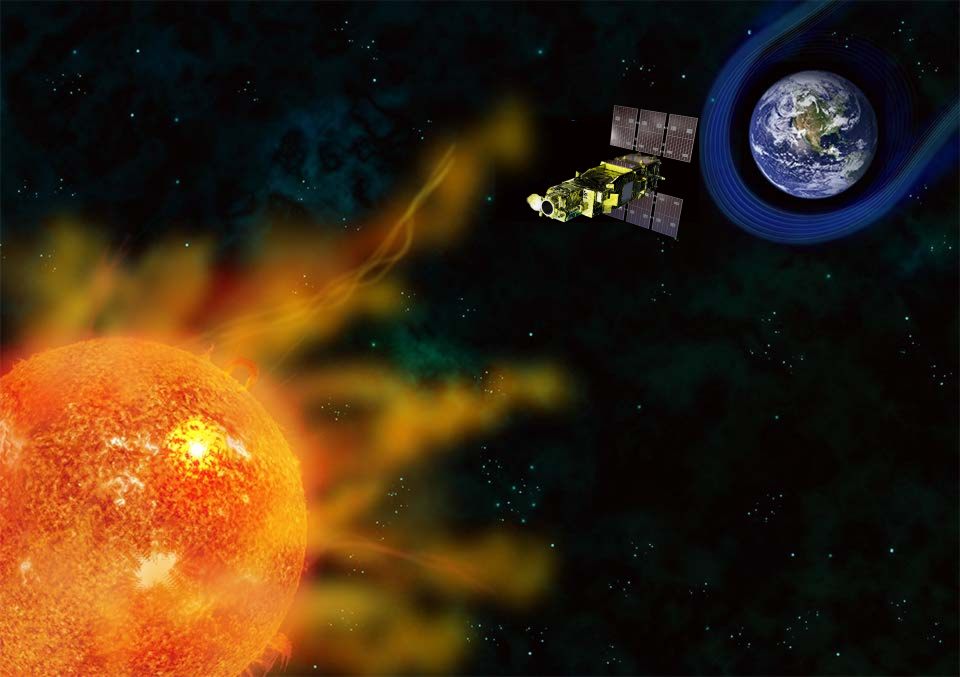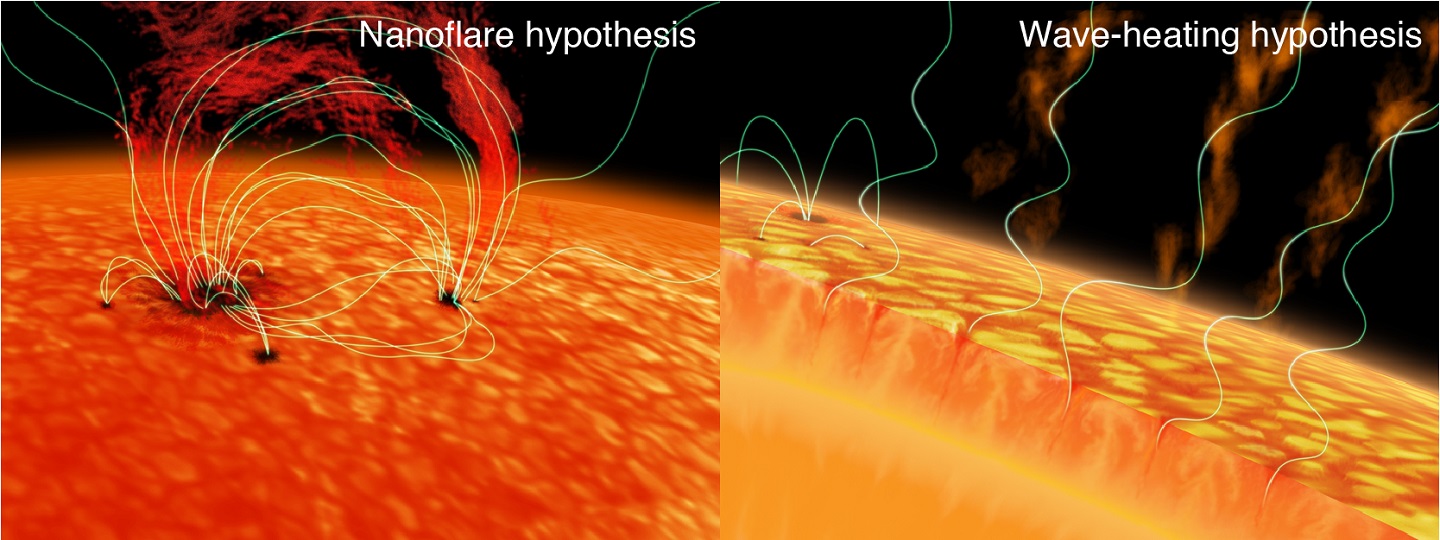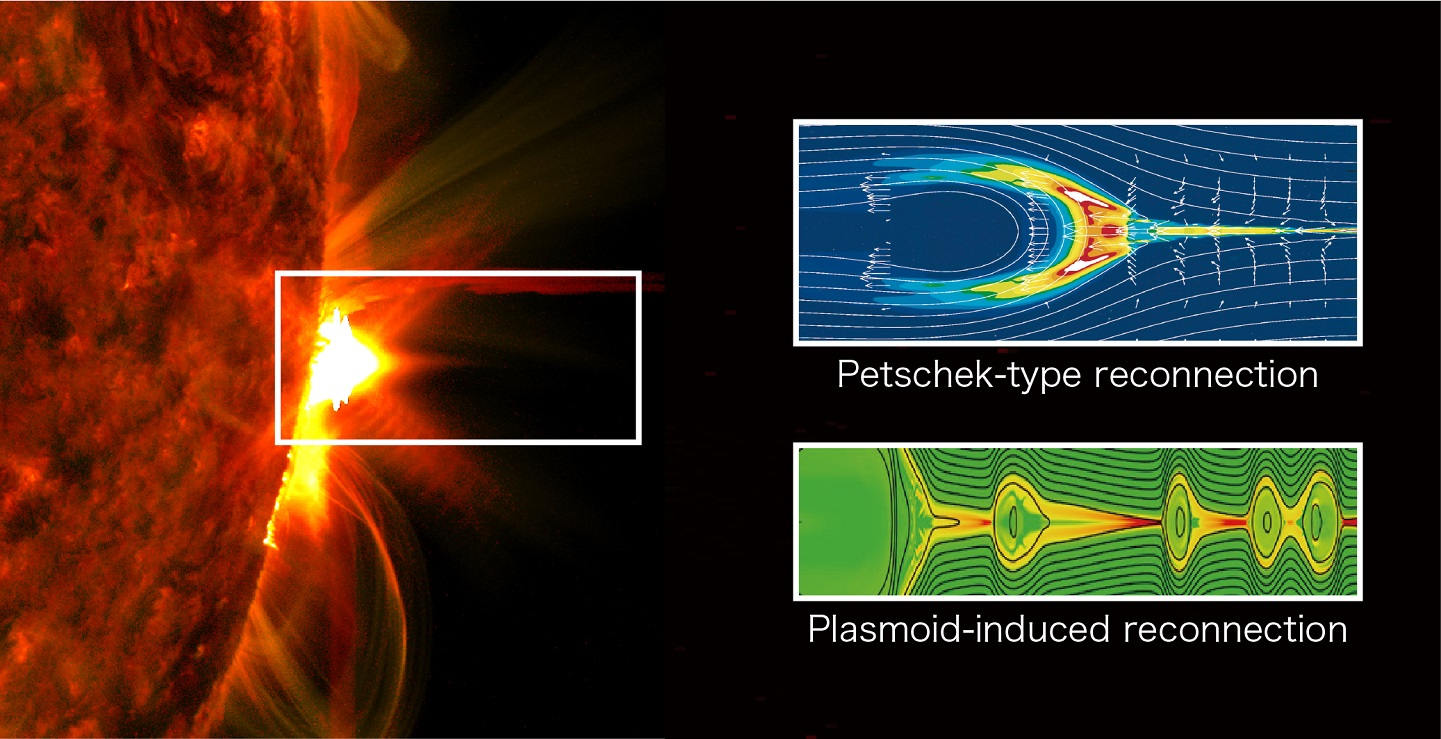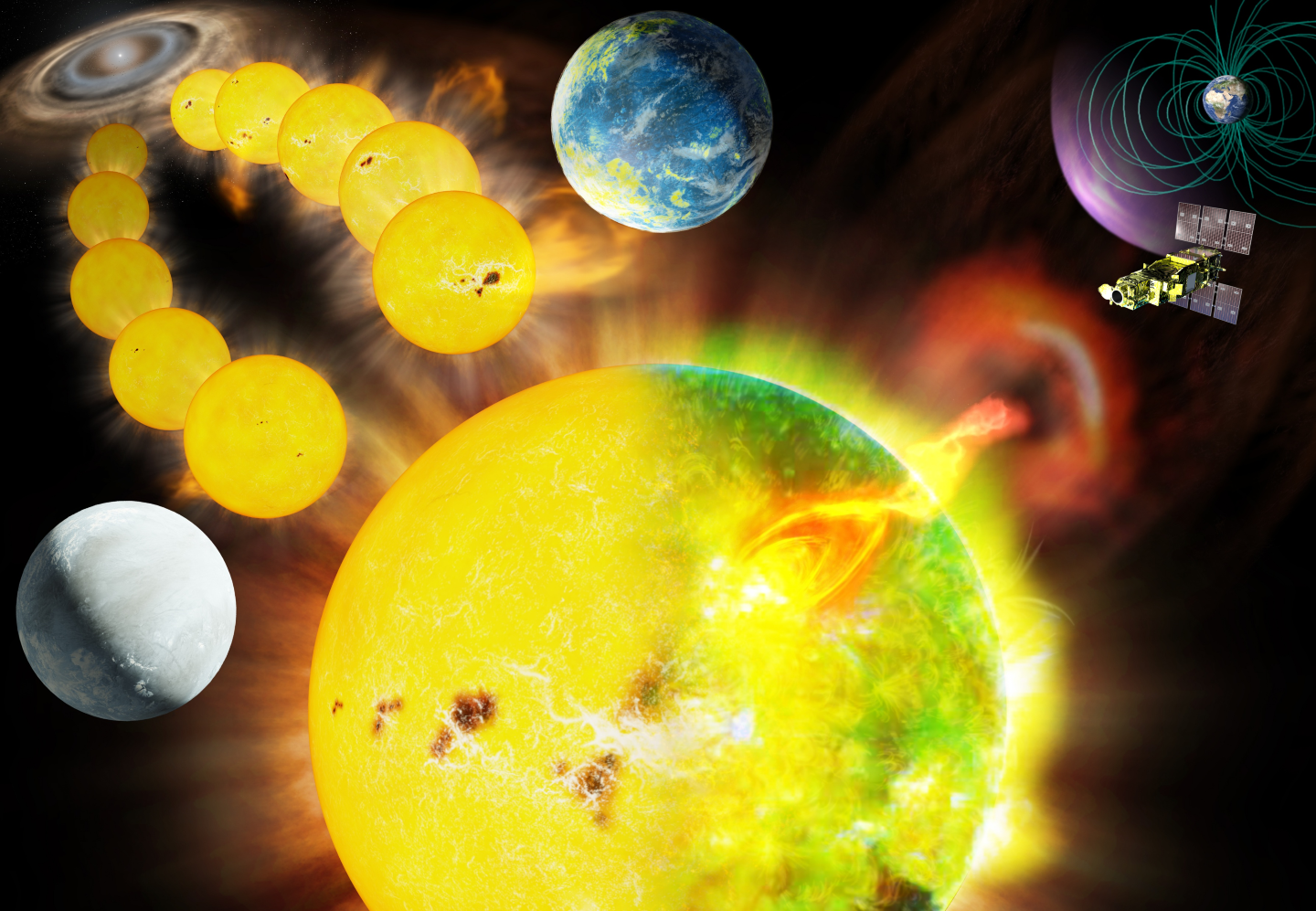Objectives
How are the hot corona and the solar wind created?
When and how do the solar flares occur?
01. Science Aimed at by SOLAR-C

The Earth and the other solar system objects are orbiting in the high temperature medium (plasma) produced by our Sun (Fig.1). Then, how is such a high-temperature plasma created? And how does the Sun affect the Earth and other planets through emitting the plasma? These are the fundamental questions of space science and astronomy, deeply related to the origin of the solar system and the life.
The next-generation solar mission SOLAR-C (Fig.2) will answer these questions using its on-board telescope EUVST (EUV High-throughput Spectroscopic Telescope), which is the solar EUV spectrometer and slit-jaw imaging system with unprecedented sensitivity and spatio-temporal resolution. SOLAR-C will close in on these mysteries from the viewpoints of atmospheric heating and the flare eruptions.

02. How the Hot Corona and the Solar Wind Are Generated?

Whereas the temperature of the solar surface is about 6,000 Kelvin, the corona in the higher atmosphere is known to reach above one million Kelvin (Fig.3). However, it is not yet fully understood why the atmosphere is heated that much. There are two scenarios to explain the hot corona, which are the "nanoflare hypothesis" and the "wave-heating hypothesis" (Fig.4). The coronal heating problem is crucial because it is closely linked to the acceleration mechanism of the solar wind, which streams out into the interplanetary space.
With previous instruments, it has been difficult to seamlessly trace the transport of material and energy, mostly due to the temperature gaps between individual instruments and the lack of resolution. SOLAR-C will, however, observe the solar atmosphere over a wide range of temperatures, simultaneously without any gaps, with high spatial and temporal resolution. Our instrument will detect very small scale atmospheric heating events (via nanoflares or wave heating) and reveal the contribution of each mechanism and the way the solar wind is produced and leaks out.

03. When and How the Solar Flares Occur?
Solar flares are the largest-scale explosive events in our solar system, where the energies of 10,000 to 10,000,000 times of the largest earthquake are released only in tens of minutes to hours. If a solar flare takes place on the Sun and a fast solar wind hits the Earth's magnetic field, a variety of phenomena, including aurora, are observed on the Earth.
Solar flares are considered to be the phenomena in which the magnetic energy accumulated in the solar corona is converted to the heat and kinetic energy of the plasma through the process called "magnetic reconnection" (Fig.5). Then, how is the magnetic reconnection realized that is fast enough to explain the observed flares? How is the magnetic energy stored and suddenly released?
It has been difficult to unveil these processes with the ability of previous telescopes. For instance, the zone of magnetic reconnection is comparatively much darker than the surroundings, and the resolution of the telescopes was not enough. By taking the advantage of spectroscopy with high spatial and temporal resolution, SOLAR-C will reveal how the solar flares occur.

04. The Three Approaches
The Hinode (SOLAR-B) spacecraft, launched in 2006, equipped with the optical telescope (SOT) and the EUV spectrometer (EIS), greatly advanced the understanding of magnetic activity by detecting magnetohydrodynamic waves and observing reconnection events. On the other hand, it suffered from weaknesses such as missing the seamless temperature coverage, i.e., the seamless coverage of different atmospheric layers (SOT for the photosphere/chromosphere and EIS for the corona), and lacking the common spatial resolutions (0.3 arcsec for SOT; 2 arcsec for EIS). Therefore, it was problematic to tackle the coronal heating mystery, where we need to follow the transport and releasing of material and energy in detail, and the solar flare mystery, where we need to observe the dark reconnection region with high sensitivity with high spatio-temporal resolution.
In order to solve the problems that were not resolved by previous instruments, SOLAR-C will take the following three unique approaches.
- Seamless temperature coverage from 10,000 Kelvin to 1-15 million Kelvin
- High spatial (0.4 arcsec) and temporal (1 sec) resolution
- High dispersion spectroscopy (velocity resolution of 2 km/s)
05. Scientific Outcomes
SOLAR-C will unveil how the high-temperature corona and solar wind are generated as well as when and how the solar flares occur. Pursuing these science targets will ultimately lead to the following understandings (Fig. 6).
- Revealing the formation mechanism of the solar atmosphere links to the understanding of the formation of stellar atmospheres under different circumstances.
- Revealing the occurrence mechanisms of solar flares links to the realization of flare forecasting (space-weather forecasting) in the near future.
- Observing and revealing the solar phenomena that we cannot experiment on the Earth link to the understanding and verification of fundamental processes of plasma physics and atomic physics.
- Understanding the origin and evolution of the solar corona, the solar wind, and the solar flares links to the understanding of the past solar-terrestrial environments when the life was created on the Earth, and even the mystery why the life exists on the Earth.
- Performing observations with SOLAR-C links to the acquisition and establishment of the technology of high-spatial resolution observation utilizing the small satellites.

